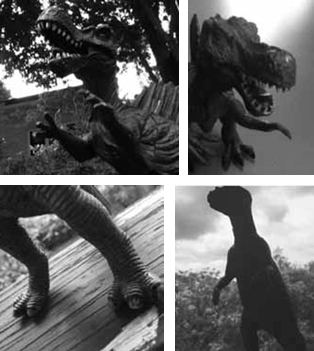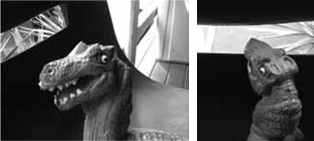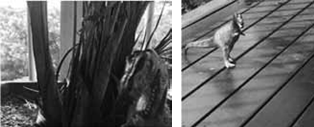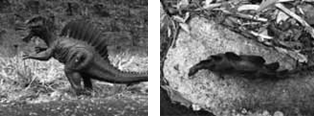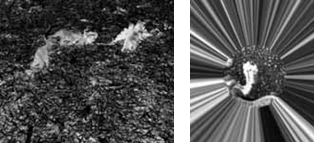By Georgina Barton
Reflecting back on my teacher training in English there was limited information presented on how to interpret modes other than language, such as image and sound. I do recall one course or subject on media literacy where we would discuss fervently a range of advertising materials – our lecturer always saying that ‘sex’ sells! Moving through to the present, my experience in studying and working in the arts, and in particular music and visual art, has allowed me to apply this knowledge and understanding when interpreting the current Australian Curriculum: English. However, it is not the case for all teachers of English particularly if limited training or professional development has been provided on the comprehension and composition of multimodal texts.
The Australian Curriculum: English has its focus on the three strands of language, literature and literacy. Throughout the content descriptors we can see a great deal of evidence of creative and multimodal writing and arts-based practice from F–10. Table 1 gives examples.
This brief paper shares ways in which teachers can enhance their practice in supporting students to create effective multimodal texts through the use of image.
Table 1
| Foundation: Retell familiar literary texts through performance, use of illustrations and images (ACELT1580) |
| Year 1: Recreate texts imaginatively using drawing, writing, performance and digital forms of communication (ACELT1586) |
| Compare different kinds of images in narrative and informative texts and discuss how they contribute to meaning (ACELA1453) |
| Year 2: Discuss how depictions of characters in print, sound and images reflect the contexts in which they were created (ACELT1587) |
| Use comprehension strategies to build literal and inferred meaning and begin to analyse texts by drawing on growing knowledge of context, language and visual features and print and multimodal text structures (ACELY1670) |
| Year 3: Create imaginative texts based on characters, settings and events from students’ own and other cultures using visual features, for example perspective, distance and angle (ACELT1601) |
| Identify the effect on audiences of techniques, for example shot size, vertical camera angle and layout in picture books, advertisements and film segments (ACELA1483) |
Retelling stories via multimodal texts
A common task for early years learners is to retell stories they have read. When my children were young one of their favourite stories was about a cranky dinosaur who one day went roaring and stamping throughout a small village. The frightened people who lived in the village were worried that the dinosaur would destroy their houses and eat their children. However, a tiny girl showed empathy and asked the dinosaur what was wrong. Of course the dinosaur had a sore tooth and just wanted someone to help.
In the classroom children often are asked to ‘retell’ stories, such as the one above, often resulting in simple sentences with two dimensional drawings (such as the example below). Working with a small school recently, I noticed that many of the children’s drawings included a front-on view of the characters looking directly at the viewer. With a lot of my research and teaching focusing on visual literacy I decided to work alongside the children in sharing some further ways in which they could effectively convey meaning through their images. To do this we decided to take to the iPads and toy dinosaurs! We worked through a number of activities together.
Enhancing understanding of image in retelling stories
Activity 1
Prior to this activity the children participated in a read aloud and shared reading of the story. They were then asked to use their iPads and take ten photos of a toy dinosaur in different locations and positions without any further information. The children are then asked to pick three of their images that they think are the best and share them with the rest of the class.
Activity 2
Some explicit teaching around visual literacy then occurs. Utilising the work of Gunther Kress and Theo van Leeuwen (2006), Lorraine McDonald (2013), Painter, Martin and Unsworth (2013), Len Unsworth (2001) and a paper by Len and myself (2014) the teacher shows the children a number of images from picture books and discusses three meta-semiotic meanings: representational or ideational meaning (field), interpersonal meaning (tenor) and compositional or textual meaning (mode).
For younger learners I usually use the following language:
- characters and setting (the participants)
- relationships (between the reader/viewer and author/creator)
- layout (of text, image and so on)
Firstly, the children need to identify who the characters are, how they are portrayed, where they are and how the location is represented (both in the language and the images used). Next the children are asked to talk about how the images make them feel about the characters and the setting. Questions such as: What was the illustrator’s purpose? What characters do the children like/dislike? How did the illustrator make them feel this way? are asked.
The elements of image shown in Table 2 are worth discussing (please refer to Lorraine McDonald’s (2012) book – Chapter 12 and Humphrey, Droga and Feez (2012, pp. 119–121)):
Activity 3
With this new knowledge the children are then asked to photograph their toy dinosaur once again but this time they are asked to do the following:
- Take a photo of your dinosaur that shows it is scary.
- Take a photo of your dinosaur that shows it is friendly.
- Take a photo of your dinosaur close up, mid shot and long shot.
- Take a photo of your dinosaur in an interesting frame.
| Element of visual image | Examples of meaning making |
|
Colour • warm tones |
Red, yellow and orange tones amplify emotion and bring energy and excitement. Blues, greens and cooler colours are more muted and detached or emotionally withdrawn. |
|
Vector • line of sight |
Vector is about ‘reading pathways’. They can be horizontal, vertical or diagonal. The vector often follows where the character is looking. These are important as they can show movement in the picture. |
|
Camera shot and angle • focalisation Layout and positioning levels of power distribution |
There are generally 3 types of camera shots – close-up, mid shot and long shot. Close-ups indicate more of an intimate relationship with the viewer while long shots create a distant relationship. The angle of the shot also impacts on meaning. A high shot shows the viewer as having more power while a low shot portrays the viewer with less power. Eye-level is equal. If a participant in the photo or image is looking directly at the viewer this is called a ‘demand’ whereas if they are looking away it is called an ‘offer’. |
| Framing and salience | Framing has the viewer focus on a specific part of an image while salience is the most ‘attention-grabbing’ part of the image. This includes part of the image that might be in sharp focus, high contrast and involves foreground and background. |
|
Texture • smooth |
Texture in images is important as it creates certain emotions. Scratchy and rough backgrounds can make the viewer uncomfortable while a smooth background such as using silky cloth can depict cosy environments. |
Activity 4
- Take a photo of your dinosaur in a particular environment.
- Use some of the photobooth effects to make interesting images of your dinosaur.
The culminating activity is for students to ‘re-tell’ the story with their simple sentences and now using their new and effective images through storyboarding.
References
Australian Curriculum Assessment and Reporting Authority. (2015). Australian curriculum v8, from http://www.australiancurriculum.edu.au/english/curriculum/.
Barton, G.M., & Unsworth, L. (2014). Music, multiliteracies and multimodality: Exploring the book and movie versions of Shaun Tan’s The Lost Thing. Australian Journal of Language and Literacy, 37 (1), 3–20.
Humphrey, S., Droga, L., & Feez, S. (2012). Grammar and meaning. Marrickville, NSW: PETAA.
Kress, G., & Van Leeuwen, T. (2006). Reading images: The grammar of visual design (2nd ed.). London, England: Routledge.
McDonald, L. (2013). A literature companion for teachers. Marrickville, NSW: Primary English Teaching Association Australia (PETAA).
Painter, C., Martin, J.R., & Unsworth, L. (2014). Reading visual narratives: Image analysis of children’s picture books. UK: Equinox Publishing Ltd.
Unsworth, L. (2001). Teaching multiliteracies across the curriculum: Changing contexts of text and image in classroom practice. Buckingham, United Kingdom: Open University Press.
Note
- As this article focuses on early years learners the following content descriptors are from F–3.
Georgina Barton is a lecturer in the School of Education and Professional Studies at Griffith University and teaches English and literacy courses in both the primary and secondary programs. She also has been a teacher in schools for over twenty years. Georgina is currently the Vice-President of the Meanjin committee for ALEA.
Acknowledgement: The author would like to acknowledge the work and contribution of the teacher, students and their parents who provided permission, through the relevant ethical procedures, to release images of their photographs and samples of work.
This article was reproduced with permission from ALEA. To learn more about ALEA visit our partners’ page.



